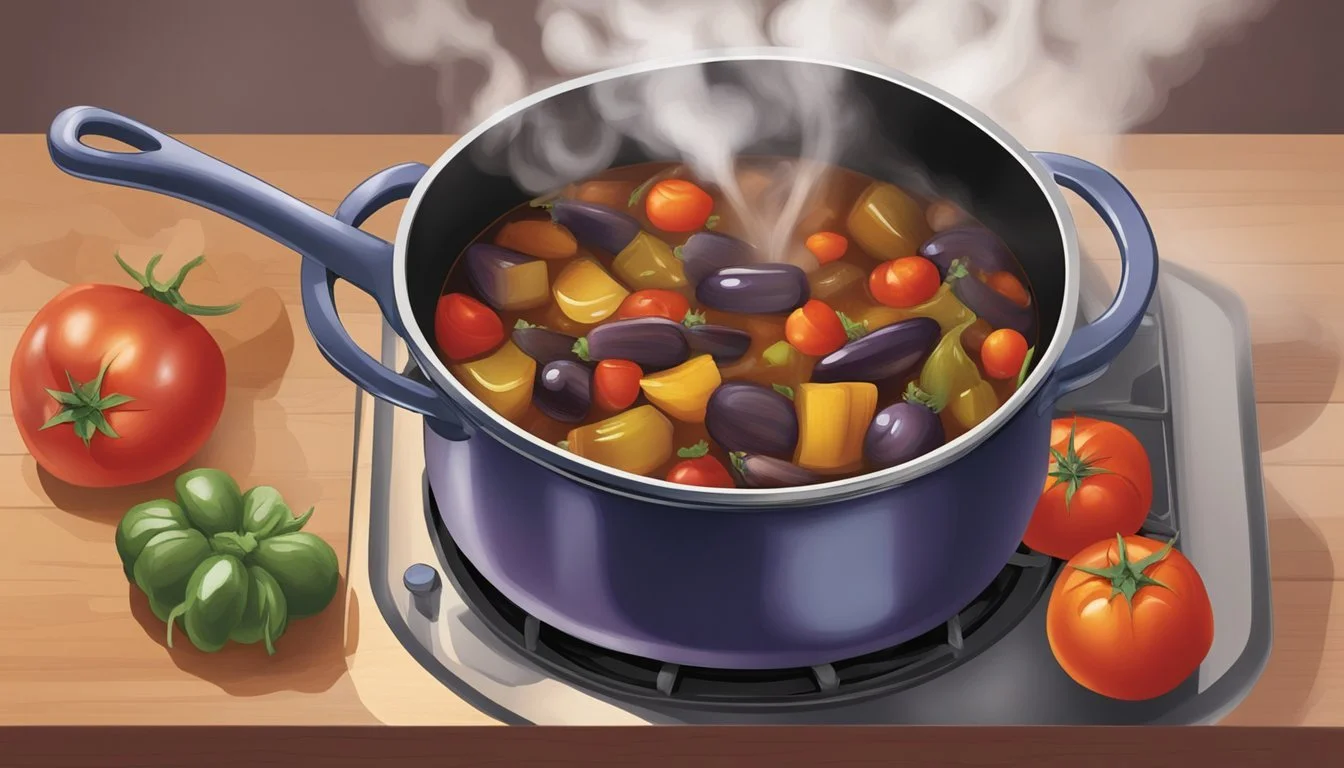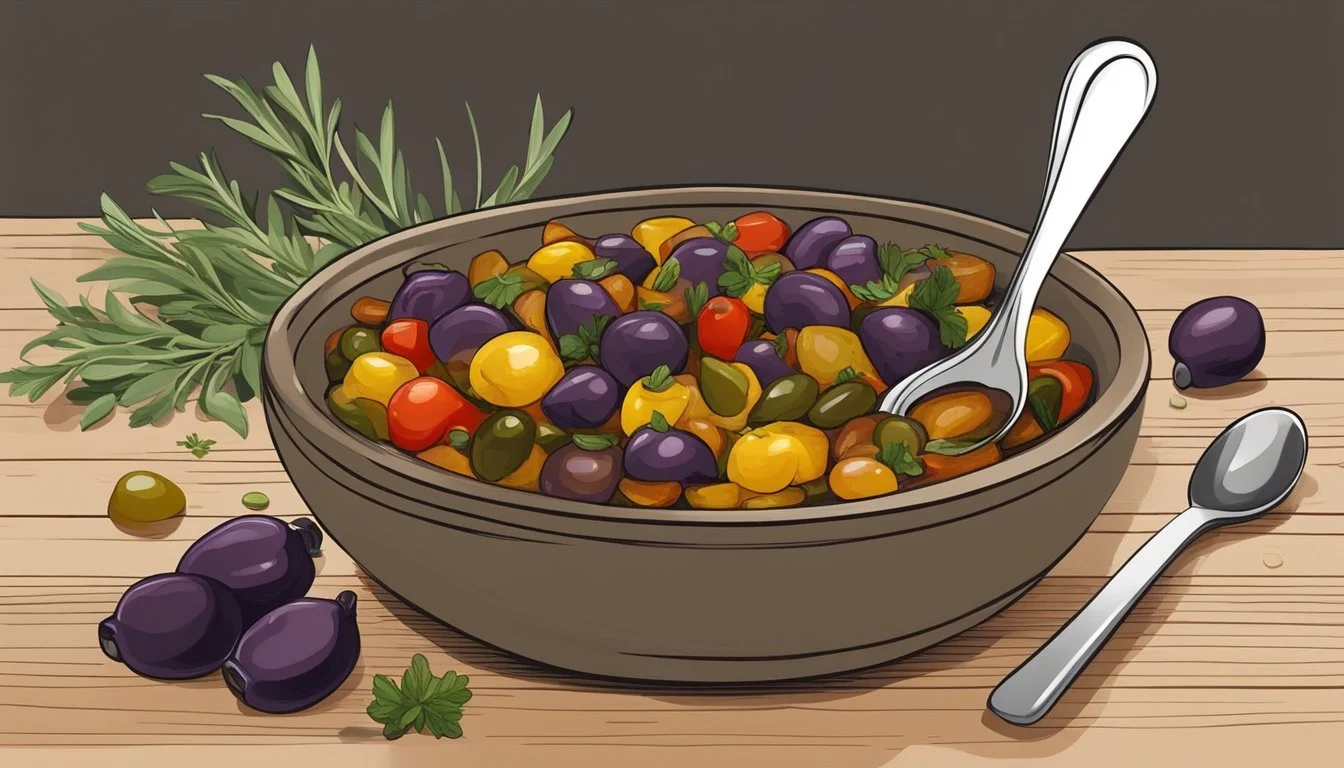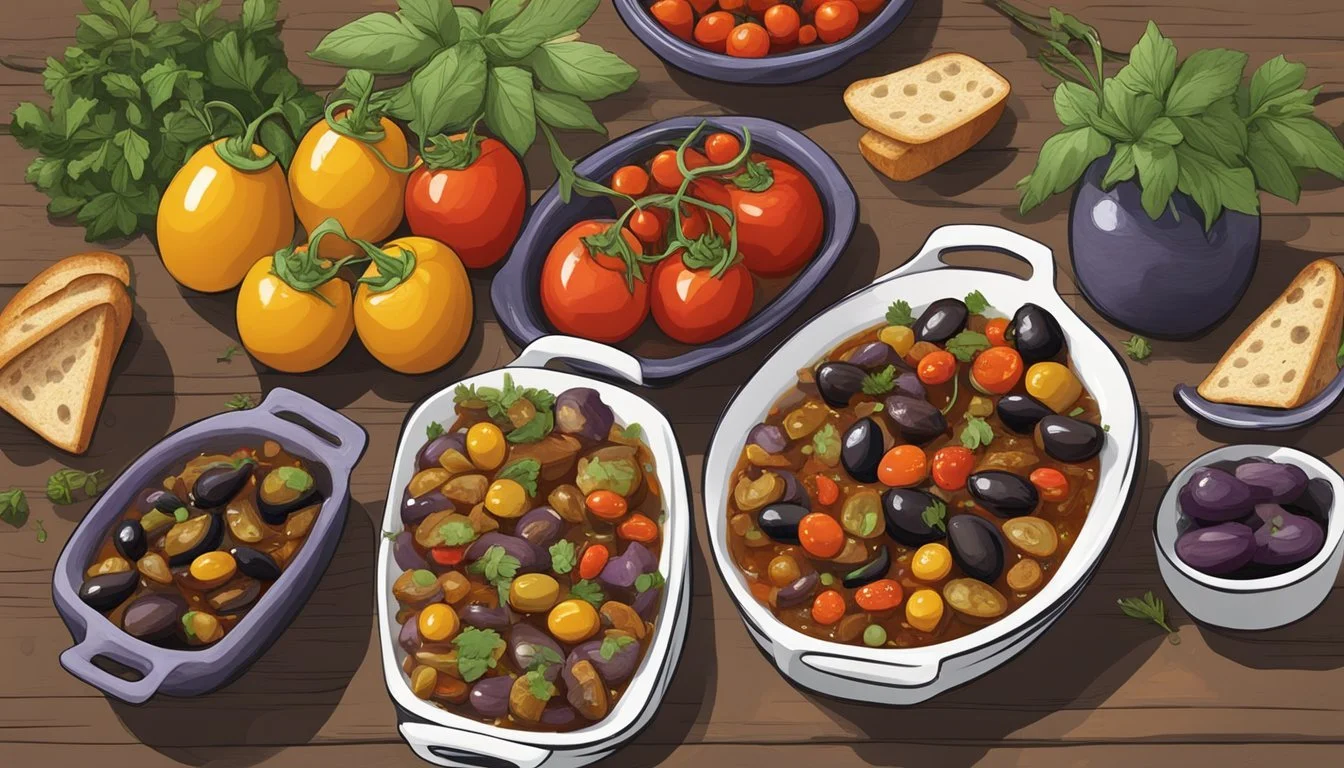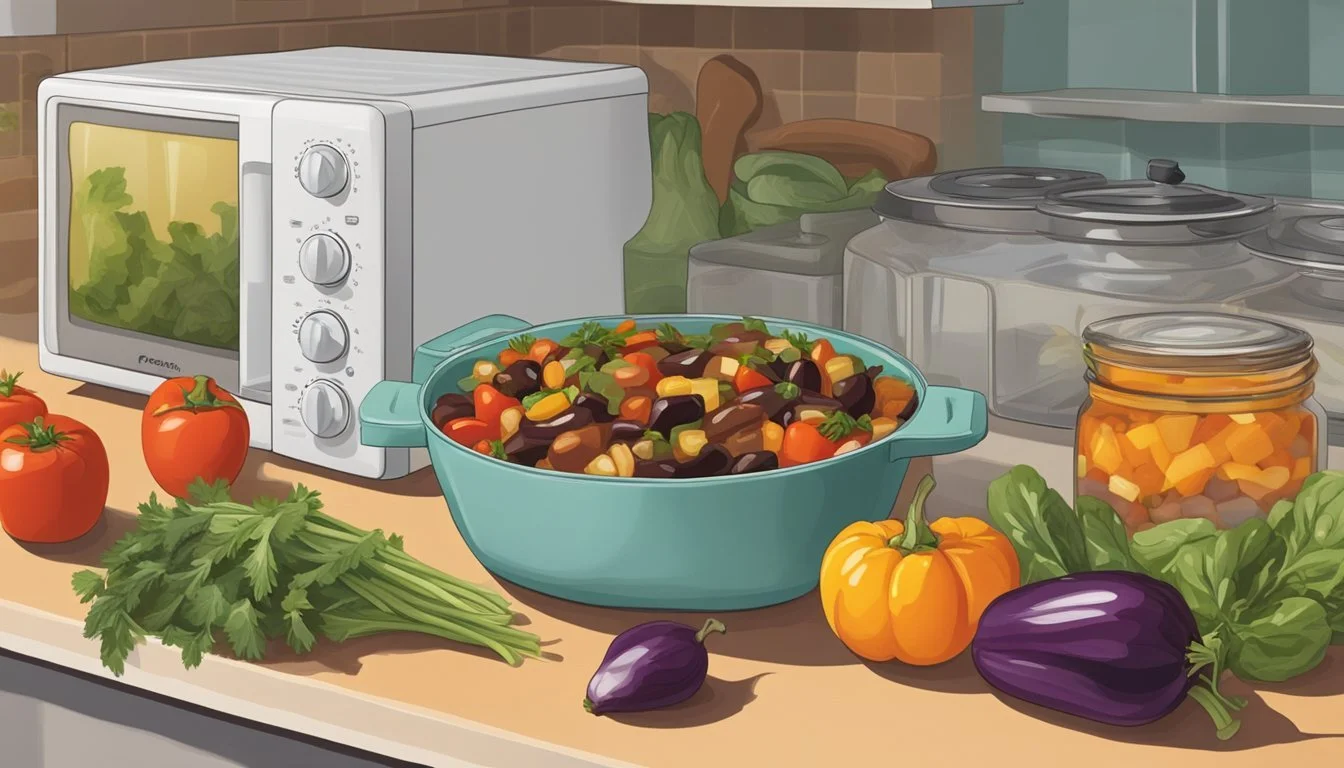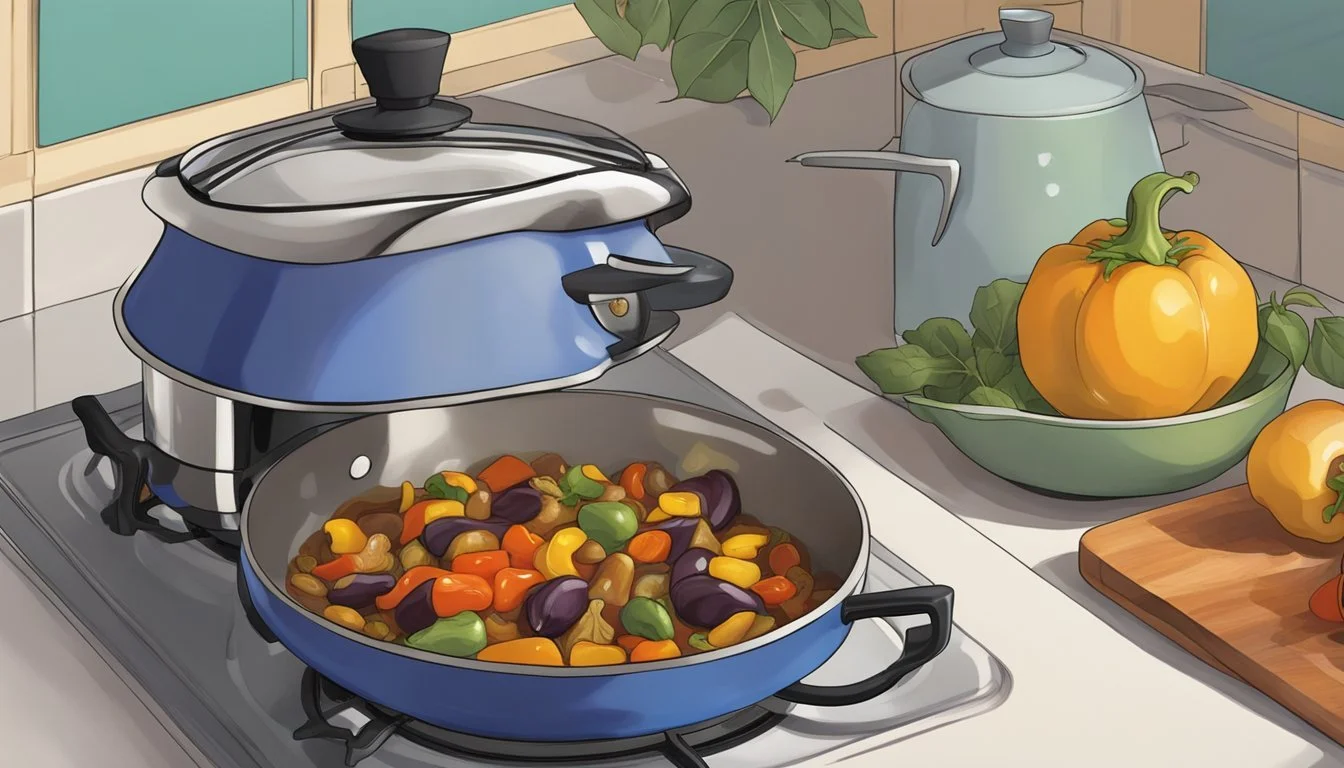Best Way to Reheat Caponata
Ensuring Flavorful Warmth Without Compromise
Caponata, the classic Italian appetizer, is a celebration of flavors, mingling the tangy, sweet, and savory notes of its ingredients. This Sicilian dish, often made with eggplant, olives, capers, (What wine goes well with capers?) and a sweet and sour sauce, lends itself well to advance preparation, which allows its flavors to meld together beautifully. However, when it comes to reheating caponata, careful attention is needed to ensure that its distinctive flavors are preserved without compromising the texture of the vegetables.
Properly reheating caponata is crucial to experiencing the dish as it's meant to be savored. The method chosen can make the difference between a caponata that's just as delightful as when it was first made or one where the nuanced harmony of flavors has been lost. Whether served as a relish, side dish, or on crostini, caponata should maintain its characteristic balance of tanginess and sweetness, with the eggplant still tender but not mushy.
To achieve this, the reheating process must be gentle and evenly distributed. Rushing this step or using too-high heat can result in a broken sauce or overly soft vegetables. It is optimal to aim for a temperature that warms the caponata through while retaining the integrity of its ingredients, thus ensuring that every bite is as layered and inviting as the Italian tradition intends.
Understanding Caponata
Caponata is a traditional Sicilian dish that presents a medley of flavors and textures, combining vegetables with a characteristic sweet and sour profile. This section details its origins, essential ingredients, and the unique flavor profile that defines it.
Origins and History
Caponata is believed to have originated in Sicily, Italy - a reflection of the island's rich history and cultural influences. Initially, it was a mariner's dish, made to provide nourishment and prevent spoilage at sea. The recipe has evolved over centuries, today recognized as a versatile staple in Sicilian cuisine.
Key Ingredients
Primary Ingredients of Caponata:
Vegetables: Eggplant, Onion, Celery
Tomatoes: for the base sauce
Aromatics: Garlic and Herbs
Vinegar and Sugar: to create the sweet and sour effect
Olives and Capers: provide briny depth
Oil: typically Olive Oil
Seasonings: Salt and sometimes a touch of Pepper or Red Pepper Flakes for heat
Flavor Profile
The flavor profile of Caponata is predominantly sweet and tangy, arising from the interplay between vinegar and sugar. Olive oil adds a silky texture and unites the herbs, vegetables, and aromatics, creating a harmony of flavors. Each bite offers a complexity with the tender eggplant, crunchy celery, and the occasional burst of briny capers and olives, encapsulated with the rich, savory-sweet aroma that the dish is known for.
Preparing Caponata
In the preparation of Caponata, one aims to highlight the rich combination of ingredients through meticulous cooking techniques and balancing of robust flavors.
Cooking Techniques
The key to preparing an impeccable Caponata lies in the careful cooking of its components. Herewith are specified techniques for the constituent elements:
Vegetables:
Roasting: Eggplants should be cubed and roasted in a preheated oven at a high temperature for about 25 to 30 minutes until they are nicely browned and soft. It's crucial that they are lightly coated in oil before roasting to ensure they don't dry out.
Sauteeing: Finely chopped onions, bell peppers, and celery are sauteed in olive oil over medium heat. Season with salt and pepper, stirring occasionally until they have softened, which typically takes about 5 to 7 minutes.
Additional Ingredients: Frying additional ingredients like capers and olives enhances their flavor. Once the vegetables are sauteed, they can be added to the skillet to meld with the base flavors.
Combining Flavors
The fusion of ingredients in Caponata creates its signature sweet and tangy profile. To achieve this:
Seasonings: A balanced mix of herbs and seasonings - including kosher salt, black pepper, and others according to taste - is essential. They should be added during the sauteing process for optimal flavor absorption.
Oil: Extra virgin olive oil is preferred for its fruitiness and ability to bind the diverse flavors of Caponata.
Acidic Components: The incorporation of vinegar or a dash of tomato sauce adds acidity which is fundamental in creating the characteristic tangy flavor. It should be added once the other ingredients have been combined and cooked to allow the vinegar scent to evaporate.
By ensuring proper cooking techniques are applied and flavors are thoughtfully combined, Caponata can be a sublime experience of Sicilian culinary tradition.
Serving Suggestions
When reheating caponata, preserving its complex tangy and sweet flavors is crucial. The dish's versatility allows it to complement a variety of foods, enhancing the overall dining experience.
As a Side Dish
Caponata excels as a side dish, offering a burst of Sicilian flavors that can accompany numerous meals. A popular choice is to serve it alongside roasted potatoes, which provide a crispy texture and a savory balance to caponata's richer taste. Additionally, caponata pairs beautifully with a simple salad, adding zest and depth to the greens.
Roasted Potatoes: A classic pairing that balances texture and flavor.
Simple Salad: Adds a fresh counterpoint to the rich, tangy caponata.
Pairing with Proteins
Caponata's bold flavors make it an excellent accompaniment to various proteins. Whether one opts for chicken Milanese with a crisp breadcrumb coating or pan-seared lamb chops offering a rich succulence, caponata provides a delightful contrast. For seafood lovers, baked cod or grilled fish are ideal for keeping the meal light yet flavorful.
Chicken Milanese: The breadcrumb-coated chicken complements the eggplant's soft texture.
Pan-Seared Lamb Chops: A hearty choice that stands up to the robustness of caponata.
Baked Cod or Grilled Fish: Offers a lighter protein option that harmonizes with caponata's bright notes.
Adaptable for Courses
Caponata's adaptability extends to its function in a meal, smoothly transitioning from an appetizer served on toasted crostini to a main course feature. For a casual yet sophisticated start, one might consider a bruschetta-style presentation or, for more formal affairs, a bed of fresh pappardelle pasta elevates it to a central dish. As grilled meats or meatballs take the spotlight, caponata can play a supporting role, enhancing and accentuating the primary flavors.
Appetizer: Spread it on crostini or serve as part of an antipasto platter.
Main Course: Pair with pappardelle or as a topping for grilled meats and meatballs.
By considering caponata's role on the plate, chefs and home cooks alike can ensure that each element of the meal complements the others, resulting in a harmonious and satisfying dining experience.
Caponata Variations
Caponata is a traditional Sicilian dish whose sweet and tangy flavor profile can vary significantly with different ingredient combinations. Whether one is looking to switch up the classic recipe or incorporate Caponata into other dishes, there are many ways to enjoy this versatile concoction.
Alternative Ingredients
Flavor Variations:
Sweetness: To highlight sweet undertones, one can incorporate raisins or a spoonful of sugar.
Texture: Adding pine nuts lends a nutty crunch, enhancing the dish’s textural complexity.
Freshness: Aromatic herbs like basil or mint can brighten the palate.
Vegetable Additions:
Artichokes bring a unique earthy taste and tender consistency to the mix.
Bell peppers offer a sweet yet slightly bitter flavor and a crunchy texture, playing well with the other components.
Caponata-Inspired Dishes
She could experiment with caponata as a base and explore various dishes:
Crostini:
Caponata spread on toasted bread makes a simple and elegant appetizer.
Pasta:
Tossing caponata with pasta creates a hearty and satisfying main dish.
Pizzas:
Using caponata as a pizza topping can give a Sicilian twist to the classic pie.
Crafting a caponata pizza involves spreading a layer of the thick vegetable medley atop pizza dough, possibly with a sprinkle of cheeses and a drizzle of olive oil.
Storing Caponata
Proper storage methods are essential for maintaining the vibrant flavors and textures of caponata. Here are the best practices for preserving this Sicilian specialty.
Short Term Storage
For short term storage, caponata should be kept in an airtight container to prevent exposure to air which can spoil its flavors. It is best to place the container in a cold part of the refrigerator to keep the ingredients fresh. Cold storage can usually preserve caponata for up to five days while maintaining its tangy and sweet flavors.
Freezing and Thawing
When freezing caponata, it should first be cooked to allow the flavors to meld. Use an airtight container or a freezer-safe bag to store the caponata, pressing out any excess air before sealing. Caponata can be frozen for up to three months. When ready to eat, caponata should be thawed in the refrigerator overnight to preserve its texture and flavor. It's important to note that the texture of the vegetables may be altered slightly once frozen and then thawed.
Reheating Caponata
When reheating Caponata, it is essential to preserve its unique tangy and sweet flavors while maintaining the dish’s desired texture. Correct reheating methods can ensure that the dish remains as delightful as when it was first cooked.
Maintaining Taste and Texture
To maintain the quality of Caponata, reheating should be done gently and slowly. The dish contains cooked vegetables and a sweet and sour sauce, both sensitive to heat. Rapid reheating can cause the vegetables to become mushy and the flavors to become muted. Instead, Caponata should be brought to a temperature that is just hot enough to make it pleasurable to eat without compromising its integrity.
Methods and Tips
When reheating Caponata, there are two main methods: using a skillet on the stove or heating it in an oven.
Skillet Method:
Place the Caponata in a skillet.
Heat on a low to medium setting.
Stir occasionally to ensure even warming.
Once hot, serve immediately.
Using a skillet allows for better control over temperature, ensuring the Caponata doesn't overcook or dry out.
Oven Method:
Preheat the oven to a low temperature (around 275°F).
Transfer the Caponata to an oven-safe dish.
Cover with foil to prevent drying out.
Heat until just hot, typically 10-15 minutes.
For either method, it is important to:
Avoid high heat as it can alter the caponata's texture and flavor.
Reheat only the servings needed to avoid multiple reheating cycles.
Remember that the dish is already cooked, and the goal is simply to warm it up.
Summary and Review
Reheating caponata properly is crucial for maintaining its texture and the blend of tangy and sweet flavors that define this Sicilian dish. The reviewer found the best method to reheat caponata is by using a stovetop technique. A gentle simmer on low to medium heat is recommended, stirring occasionally to ensure even heating without scorching. They stressed avoiding harsh reheating environments such as high-heat settings that could degrade the delicate flavors and textures.
Preferred Method: Stovetop on low to medium heat
Stirring: Occasionally, for even heat distribution
Container: A heavy-bottomed pan to avoid sticking
Microwave reheating, while convenient, was generally not advised, as rapid heating can affect the texture adversely. The reviewer did, however, acknowledge that if a microwave is used, one should opt for shorter intervals and lower power settings, stirring in-between to manage the reheating process better.
For an optimal dining experience, serving caponata at a slightly warm or room temperature was suggested, as extreme temperatures could mask the complexity of the flavors. Moreover, the review mentioned that when reheated attentively, caponata can almost rival the freshness of its initial preparation, ensuring the diner's experience remains high in quality.
Ideal Serving Temperature: Slightly warm or room temperature
Microwave Option:
Power: Low
Intervals: Short, with stirring in-between
The evidence points toward a careful reheating process enhancing the dining experience, as it upholds the integrity of caponata's signature profile. The dining experience and review rate the stovetop method most positively for the task. The information presented demonstrates a confident and knowledgeable approach to one of traditional Sicilian cuisine's cherished recipes.

